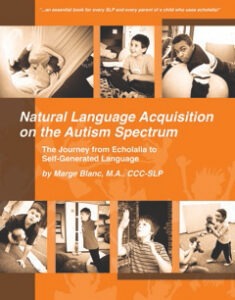Supports for Regulation
Co-regulation
An entire profession is devoted to supporting self-regulation, the ability of any of us to be physically and cognitively alert enough to do what we want to do, but not over-alerted such that we can’t focus on it.
Occupational Therapists (OTs) have taught us so much about how our bodies need to be ready to support our brains to be their best; to be set up for ‘just right challenges.’ Supports include strategies for increasing alertness, and for avoiding over-stimulation which can lead to meltdown (shutting down and becoming unavailable).
If that sounds like a foreign language to you, let’s take it step-by-step:
- no ‘body’ was intended to be completely inactive for very long.
- no ‘body’ was intended to look at screens while being under-alert to avoid becoming under-alert for prolonged periods of time.
- Sensory-based OTs remind us that when our body is seeking visual input, that’s often because input to the rest of our body is either not available or not being utilized. In other words, visual-reliance can mask what the body is not providing.
- We all, especially our children, were meant to move!!
- That’s what regulation means. If our bodies are moving and receiving helpful sensory and motor input, we can achieve good self-regulation.
Co-regulation acknowledges that a child can’t self-regulate all by themselves. They need us to be partners in achieving well-regulated states.
That might mean the extra recess one teacher told us about recently, or doing ‘brain gym’ in the mornings before settling into some seated classroom work. Or not sitting for very long — and when seated, it’s on a yoga ball so that movement still occurs even while sitting down. Or maybe it means something different for every child, and permission to do that in a classroom.
There are so many possibilities, but one common denominator is movement!
Movement
The input we get from moving our bodies includes:
1. Deep-pressure/proprioceptive input to joints and muscles that comes from resisting gravity, pushing against our surroundings, moving things from place to place, or sometimes from receiving extra pressure from whatever surrounds us. The air gives us very little pressure/feedback, so moving in water, or within Lycra, or when we’re wearing compression clothing can give us extra proprioceptive input.
2. As sensory-based OTs would remind us ‘prop’ (proprioception) is your friend.’ It can rev you up if you’re too sedentary, or slow you down if you’re moving too fast (without getting enough feedback if your body is too revved up and not getting enough feedback from the environment). Sound familiar?
3. Touch/tactile input. For some individuals, light touch is aversive, and keeps such individual away from others, until those others understand
4. But deep touch is usually very pleasant. Figure out this equation with your child!
5. Vestibular input: Why do kids swing and swing and swing and swing? If kids do something ‘forever,’ it’s (almost) the right thing, but without enough intensity or variability… talk to your OT about how to give kids enough vestibular input that they (with their expertise) can monitor.
6. Kids need more time ‘out of upright’ such as on their hands and knees in order to receive input to the inner ear to activate the vestibular system. This also creates ‘weight-bearing’ on shoulders and wrists which kids need to be able to support their fine motor skills with their bodies (so they don’t just depend on their eyes).
7. Kids also need movement that integrates auditory input with visual input with vestibular input.
8. Many kids struggle with sensory registration: either under-registering or over-registering, or both. This can be in any modality, but often manifests in not being able to feel things like hunger or being full (interoception). Another common challenge is sensory ‘defensiveness,’ or over-registering sensations like touch or sound. Deep proprioception and movement help, but we need to be protectors and allies so kids are not misunderstood as willfully avoidant.
9. Unrestricted access to whatever kids might need as they grow and change would be ideal. The worlds of kids is not ideal…
Learn more about Sensory Integration.
Seek out expertise to help you and your child! It is powerful!
